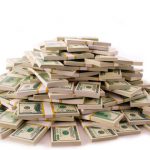UNITED States economic growth accelerated from January through March, buoyed by the strongest consumer spending in more than two years. The strength offset further declines in government spending that are expected to be drag on growth throughout the year.
The US Commerce Department said yesterday that the overall economy expanded at an annual rate of 2.5 percent in the first quarter, rebounding from the anemic 0.4 percent growth rate in the October-December quarter. Much of the gain reflected a jump in consumer spending, which rose at an annual rate of 3.2 percent. That's the best since the end of 2010.
Businesses responded to the greater demand by rebuilding their stockpiles. And home construction rose further.
But government spending fell at a 4.1 percent rate, led by another deep cut in federal defense spending. That kept growth below economists' expectations of a rate exceeding 3 percent. And broad government spending cuts that began in March are expected to weigh on the economy for the rest of the year, while higher taxes have started to make some consumers and businesses cautious.
Many economists say they think growth as measured by the gross domestic product is slowing in the April-June quarter to an annual rate of just 2 percent.
GDP is the broadest gauge of the economy's health. It measures the total output of goods and services produced in the US, from haircuts and hamburgers to airplanes and automobiles.
The cuts in government spending have forced federal agencies to furlough workers, reduced spending on key public projects and made businesses more nervous about investing and hiring this year.
The cuts came two months after US President Barack Obama and Congress allowed a Social Security tax cut to expire. That left a person earning US$50,000 a year with about US$1,000 less to spend this year. A household with two high-paid workers has up to US$4,500 less.
Consumers' take-home pay is crucial to the economy because their spending drives roughly 70 percent of growth.










